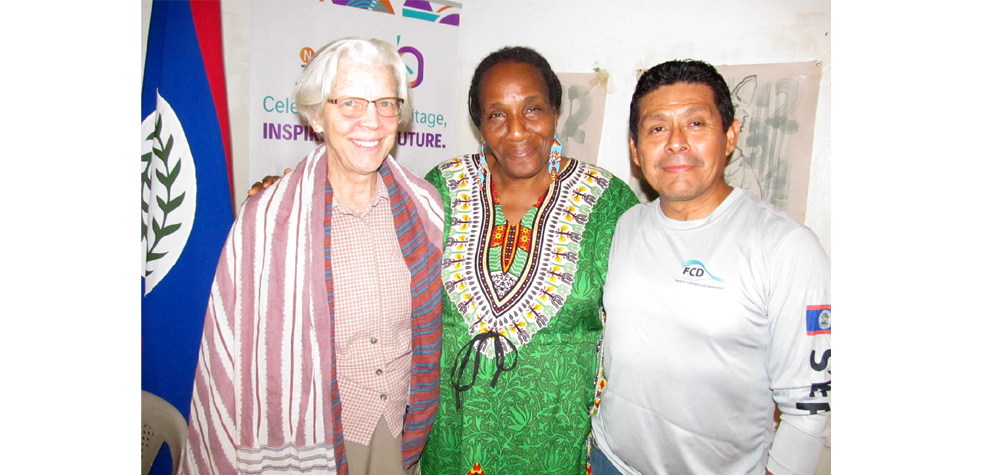Photo: L-R: Dr. Anabel Ford from El Pilar, Cynthia Ellis Topsey from the Godsman Ellis Center, and Rafael Manzanero from FCD at the Benque House of Culture on Friday night
by Orlando Pulido
SANTA ELENA TOWN, Cayo District, Sat. June 22, 2024
The Versavel Lecture Series in Benque Viejo continued on Friday night, June 21, for a second time at the House of Culture in Benque. The main presenter was Rafael Manzanero, the Executive Director of Friends for Conservation and Development (FCD).
Manzanero shared that FCD continues to do work, along with the Forest Department, in the Vaca Forest Reserve (a buffer), the Baldy Beacon in Mountain Pine Ridge, and the Chiquibul National Park. The Chiquibul itself is over two hundred and sixty-nine thousand acres, and the Vaca is another thirty-four thousand acres.

“The major challenges that we face is, of course, cattle ranching activity. We still have the problem of gold panning, illegal wildlife trade, and then, of course, we also have the agriculture production taking place along the border,” said Manzanero.
Manzanero noted that cattle ranching along Belize’s border is becoming dominant. A total of 920 hectares of active pastures are also known to be located in the Chiquibul.
Manzanero reported that these reserves are becoming “more accessible, so, in a way, visiting the area so that they can understand more about what is happening there.”
Part of the strategy now is for FCD to develop partnerships with the Guatemalans, which they have been doing since 2008. (The Mopan River originates in Belize, passes through Guatemala, and returns and joins the Macal in Branch Mouth to form the Belize River.)
The areas managed by FCD are rich in biodiversity. Part of that biodiversity includes the scarlet macaw—300 of which remain in Belize. These rare birds normally travel to Red Bank to feed. But there has been some habitat destruction in Red Bank, admits Manzanero.
In the Chiquibul itself, there are caverns which “are still highly undiscovered”, informed Manzanero. The last section of these Chiquibul cave systems—the largest cave system in Central America — ends in Guatemala.
The recent fires have affected some of the reserves being managed by FCD. Manzanero said that “we still do not know how much was lost.”
While the pressure of the human footprint in the reserves managed by FCD “is always there”, acknowledged Manzanero, the good news is that FCD has developed partnerships with numerous national and international conservation-related entities.
For more information on FCD you can visit www.fcdbelize.org. FCD operates in the Chiquibul Forest (a tremendous freshwater catchment area), which forms part of the largest contiguous block of tropical forest north of the Amazon.

